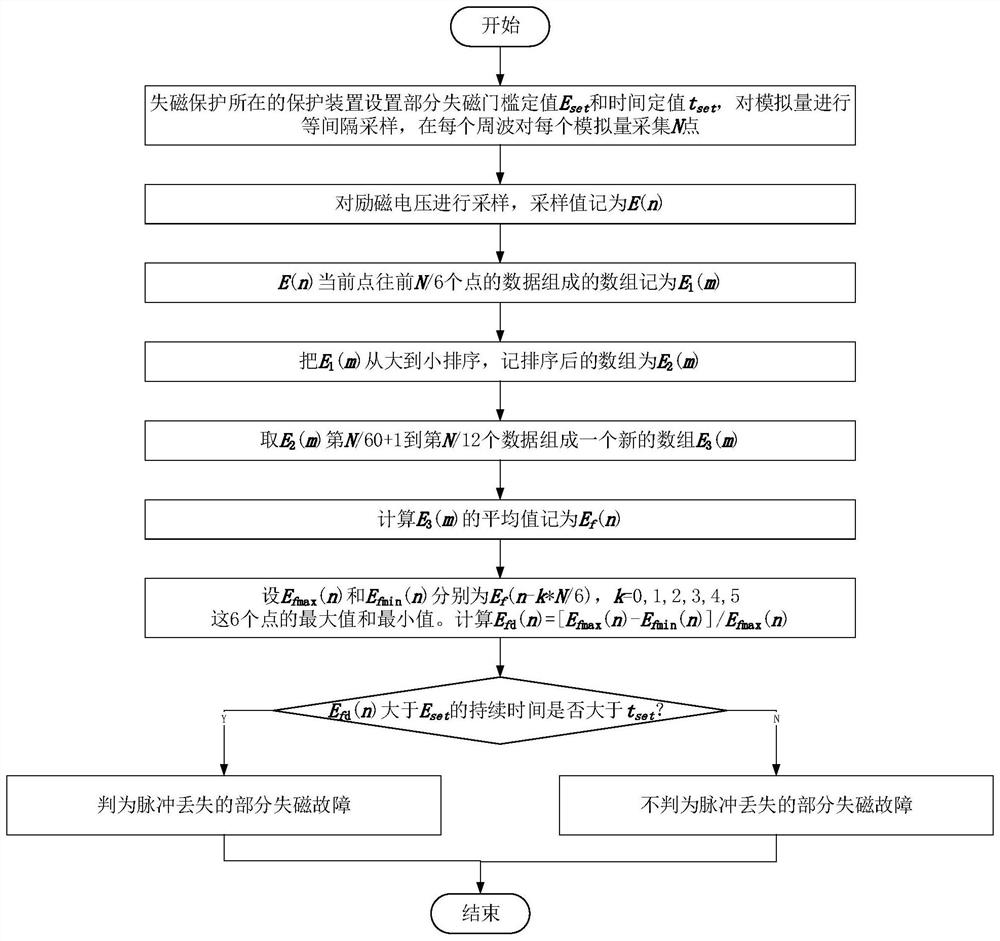A Partial Loss of Excitation Fault Identification Method with Pulse Loss
A pulse loss and fault identification technology, which is applied in emergency protection circuit devices, motor generator testing, electrical components, etc., can solve problems such as the decrease of the average value of the excitation current, the inability to judge the loss of excitation voltage pulses, and the inability to collect details of the excitation voltage.
- Summary
- Abstract
- Description
- Claims
- Application Information
AI Technical Summary
Problems solved by technology
Method used
Image
Examples
Embodiment Construction
[0029] The present invention will be further described below in conjunction with the accompanying drawings. The following examples are only used to illustrate the technical solutions of the present invention more clearly, and should not limit the protection scope of the present invention.
[0030] An embodiment of the present invention provides a method for identifying a partial loss of excitation fault due to pulse loss, specifically as follows:
[0031] The protection device where the loss-of-excitation protection is located sets a partial loss-of-excitation threshold value E set and time fixed value t set , sample the analog quantity at equal intervals, and collect N points for each analog quantity in each cycle, where N is an integer multiple of 60. At each sampling point n, perform the following steps:
[0032] In the embodiment of the present invention, sampling the excitation voltage is taken as an example, the excitation voltage is connected in the form of an instant...
PUM
 Login to View More
Login to View More Abstract
Description
Claims
Application Information
 Login to View More
Login to View More - R&D
- Intellectual Property
- Life Sciences
- Materials
- Tech Scout
- Unparalleled Data Quality
- Higher Quality Content
- 60% Fewer Hallucinations
Browse by: Latest US Patents, China's latest patents, Technical Efficacy Thesaurus, Application Domain, Technology Topic, Popular Technical Reports.
© 2025 PatSnap. All rights reserved.Legal|Privacy policy|Modern Slavery Act Transparency Statement|Sitemap|About US| Contact US: help@patsnap.com

